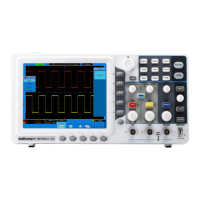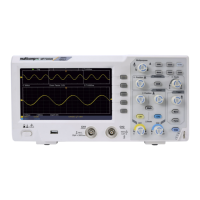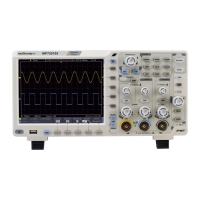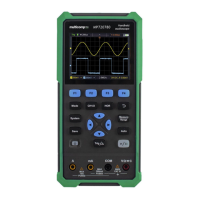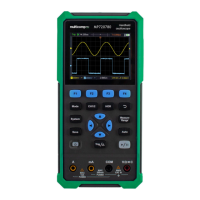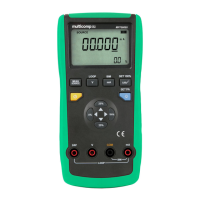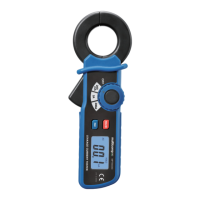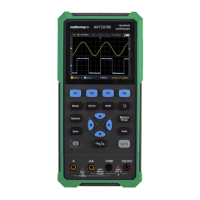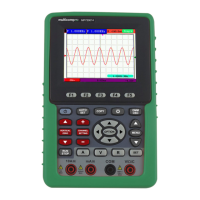User Manual
Video Trigger: Trigger on fields or lines for standard video signal.
Pulse Trigger: Find pulses with certain widths.
Slope Trigger: The oscilloscope begins to trigger according to the signal rising or
falling speed.
Runt Trigger: Trigger pulses that pass through one trigger level but fail to pass
through the other trigger level.
Windows Trigger: Provide a high trigger level and low trigger level, the oscilloscope
triggers when the input signal passes through the high trigger level or
the low trigger level.
Timeout Trigger: The oscilloscope triggers when the time interval from when the
rising edge (or the falling edge) passes through the trigger level to
when the neighbouring falling edge (or the rising edge) passes
through the trigger level is greater than the timeout time set.
Nth Edge Trigger: The oscilloscope triggers on the Nth edge that appears on the
specified idle time.
The eight trigger modes in Single Trigger are described respectively as follows:
1. Edge Trigger
An edge trigger occurs on trigger level value of the specified edge of input signal.
Select Edge trigger mode to trigger on rising edge or falling edge.
In Edge Trigger mode, the trigger setting information is displayed on bottom right of
the screen, for example, ,indicates that trigger type is edge,
trigger source is CH1, coupling is DC, and trigger level is 0.00mV.
Edge menu list:
Set vertical channel trigger type as edge trigger.
Channel 1 as trigger signal.
Channel 2 as trigger signal.
Channel 3 as trigger signal.
Channel 4 as trigger signal.
AC power line as trigger signal.
Block the direct current component.
Allow all component pass.
Block the high-frequency signal, only low-frequency
component pass.
Trigger on rising edge
Trigger on falling edge
Acquire waveform even no trigger occurs
Acquire waveform when trigger occurs
When trigger occurs, acquire one waveform then stop
